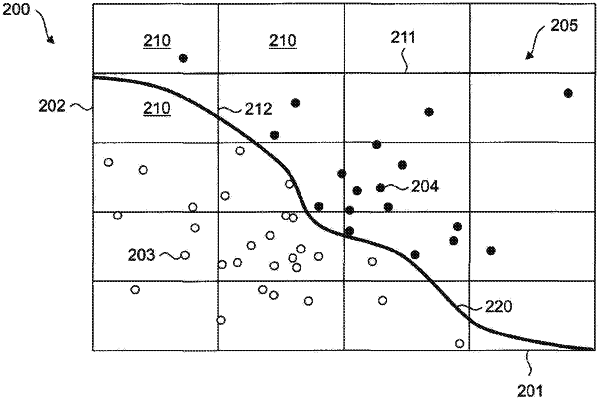| CPC D01H 13/22 (2013.01) [D01G 31/003 (2013.01); G06T 7/001 (2013.01); G06T 2207/30124 (2013.01)] | 21 Claims |

|
1. Method for optimizing a yarn production process in which foreign materials (90) are monitored in a textile fiber formation (9), wherein
the textile fiber formation (9) is irradiated with electromagnetic radiation from at least two different subranges of the electromagnetic spectrum,
the electromagnetic radiation interacts with the foreign materials (90), and
foreign materials (90) are detected based on their interaction with the electromagnetic radiation,
characterized in that
a color class (411-414) of foreign materials (90) is assigned to each of at least two different subranges of the electromagnetic spectrum depending on the interaction of the electromagnetic radiation in the respective subrange of the electromagnetic spectrum with the foreign materials (90),
the detected foreign materials (90) are automatically classified in the at least two color classes (411-414) depending on their interaction with the electromagnetic radiation in the relevant subrange of the electromagnetic spectrum,
when a sample having a plurality of classified foreign materials (90) is available, a frequency distribution (511-514) of the foreign materials (90) is automatically determined for the color classes (411-414),
the determined frequency distribution (511-514) is automatically compared with a reference frequency distribution, and
in case of a significant deviation of the determined frequency distribution (511-514) from the reference frequency distribution, at least one of a set of several optimization actions is performed automatically.
|